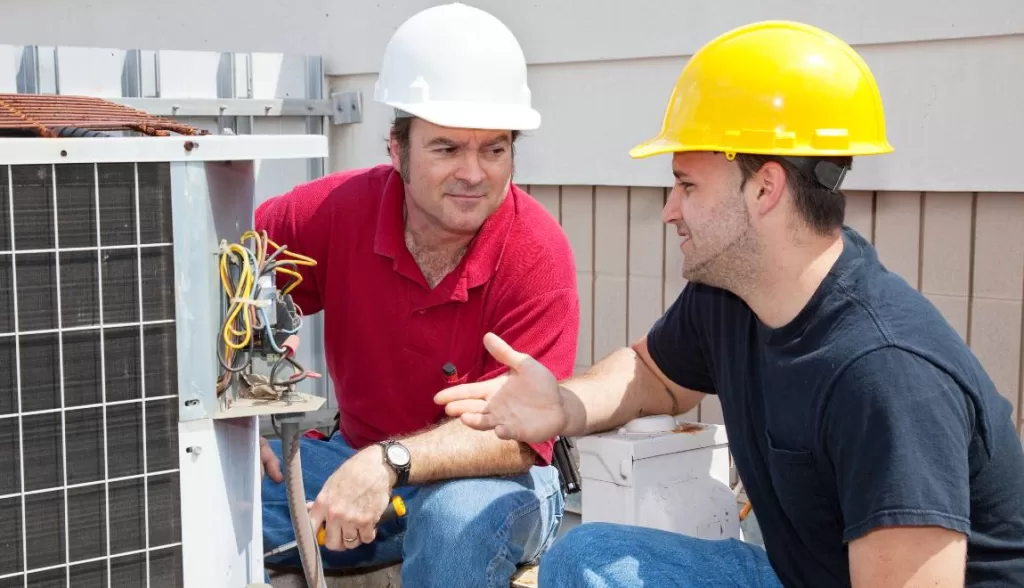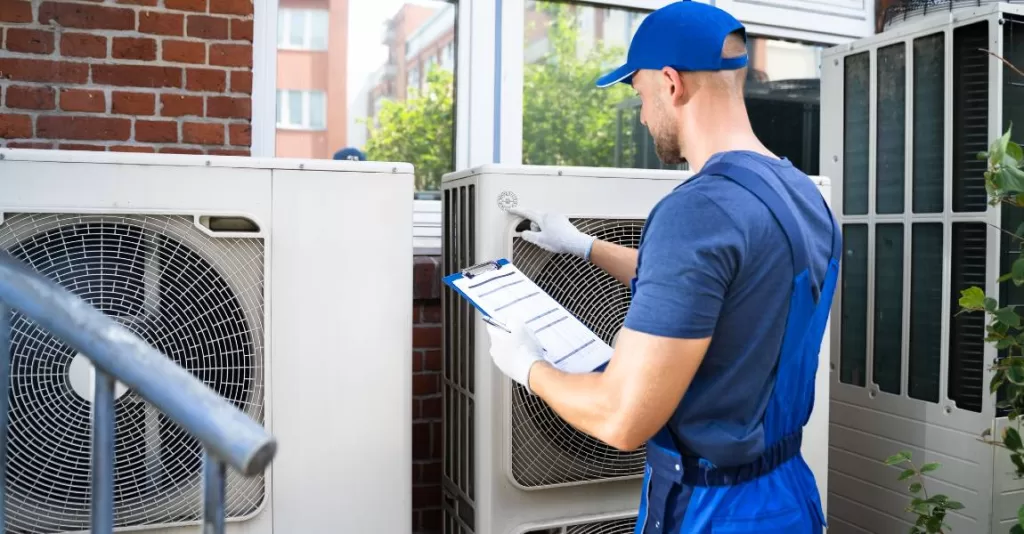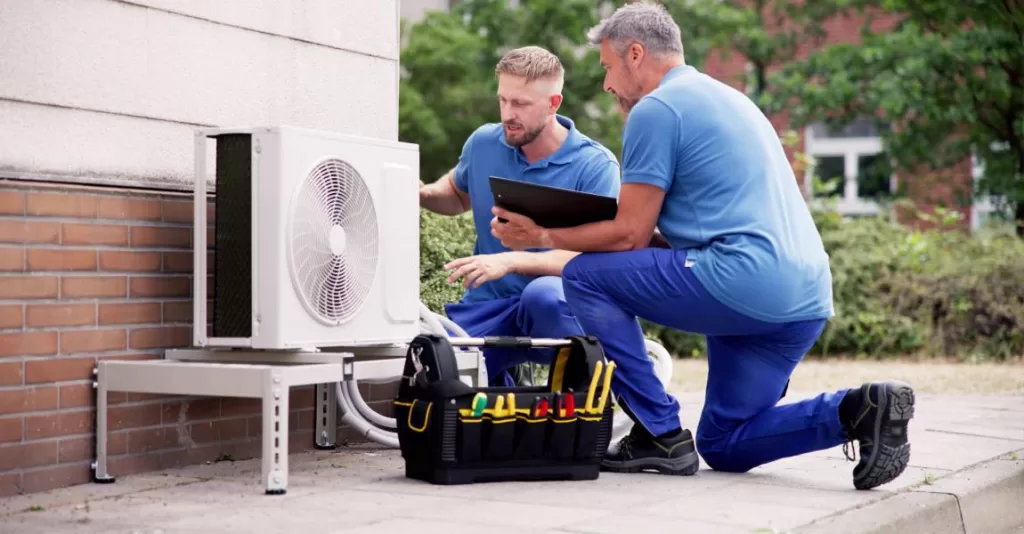What Are the Common AC Installation Mistakes and How to Avoid Them?
When installing your air conditioner (AC) system, you want to ensure everything is done correctly to avoid any potential issues down the line. Proper installation plays a crucial role in the efficiency, longevity, and performance of your AC system.
Making mistakes during installation can lead to unnecessary expenses and discomfort, especially when installing your AC where errors can affect its efficiency. In this article, we will discuss the common AC installation mistakes to avoid for a smooth cooling experience.

Table of Contents
Why is Proper Installation Important for Your AC?
Proper AC system installation is essential for various reasons, including its impact on efficiency and performance. When your AC is installed correctly, it operates at its optimal level, cooling your home efficiently without working harder than necessary. This helps maintain a comfortable indoor environment and contributes to energy efficiency, saving you on utility bills in the long run.
In addition, a well-installed AC system is likely to have a longer lifespan than an improperly installed one. This means fewer AC repairs and replacements, ultimately saving you money and hassle. Proper installation also ensures that your AC system meets warranty considerations, protecting your investment in case of any manufacturer defects.
What Are the 7 Common AC Installation Mistakes and How to Avoid Them?
When installing an AC system for your home, there are several mistakes that you should avoid to ensure that your air conditioner’s efficiency and performance are at their best.
One common mistake is installing vents in the wrong areas, leading to poor indoor air quality and energy efficiency issues.
Another mistake is not considering the location of your thermostat, which can result in your air conditioner not working correctly. It’s also essential to bring in a professional HVAC technician to properly install your air conditioner, as DIY installations can cost you more money in the long run.

Not having the right AC system for your home can lead to heat-generating issues and decreased efficiency of the air conditioner. Make sure to ensure that your technician is placing the air vents strategically to maximize the performance of your air conditioning unit. Finally, make sure that all components of your air conditioning system are properly installed to avoid any potential issues with the efficiency of your air conditioning.
One of the most common AC installation mistakes is incorrect thermostat placement. Placing the thermostat in direct sunlight or near heat sources can result in accurate temperature readings, leading to efficient cooling. Another crucial mistake to avoid is improper AC unit sizing. Choosing the wrong size unit can cause your AC to run constantly or in a short cycle, impacting both comfort and energy efficiency, mainly when an oversized air conditioning unit is installed.
Refrigerant mishandling is another common mistake during AC installation. Incorrect refrigerant levels can lead to system inefficiencies, higher energy bills, and potential leaks. It is vital to have a qualified technician handle refrigerant charging to ensure proper levels and prevent any leaks.
How to Avoid AC Installation Mistakes While Insulating Ducts?
Proper ductwork insulation is key to maintaining indoor air quality and maximizing the efficiency of your HVAC system, just as installing your AC correctly is essential for its effectiveness. Common duct insulation errors include using the wrong type of insulation or leaving gaps in the insulation, leading to energy loss and reduced airflow. Similar issues can arise when installing a new AC without proper consideration. By insulating ductwork correctly, you can prevent air leakage and ensure your AC operates at its best.
Insulating ductwork improves energy efficiency, reduces wear and tear on your HVAC system, and enhances indoor air quality, similar to correctly installing a new AC unit for optimized performance. Proper insulation helps keep conditioned air at the desired temperature as it travels through the duct system, ensuring that your home stays comfortable while minimizing energy waste.
Ensuring Proper Drainage System During AC Installation
A well-functioning drainage system is crucial for your AC unit to operate efficiently, including proper installation around the AC condenser to prevent water damage. Poor drainage can lead to water accumulation, mold growth, and potential water damage to your property; ensuring your AC condenser is in a well-drained area is vital for your air conditioning unit to work efficiently. Common drainage issues to watch for include clogged drains, improper slope, or disconnected pipes, which can also affect the functionality of your air conditioning unit if not checked.
Preventative measures for drainage problems include regular maintenance checks to ensure proper water flow, clearing any debris or obstructions in the drainage system, and addressing any leaks promptly. By maintaining a healthy drainage system, you can prevent costly repairs and ensure the smooth operation of your AC unit.

Why Is Professional AC Installation Crucial?
Professional AC installation provides the expertise needed to handle complex HVAC systems effectively. HVAC experts understand the intricacies of air conditioning systems, ensuring that your AC is installed correctly the first time. By hiring a professional technician, you can avoid common DIY installation mistakes that may compromise the performance and longevity of your AC system.
In addition, professional installation contributes to better indoor air quality. Proper installation techniques help minimize dust, allergens, and pollutants in the air, creating a healthier living environment for you and your family. Trusting a reputable HVAC company for your AC installation guarantees peace of mind and an efficient cooling system.
Conclusion
In conclusion, avoiding common AC installation mistakes is crucial for ensuring optimal performance, energy efficiency, and longevity of your cooling system. By adhering to proper installation practices such as accurate sizing, correct placement, adequate insulation, and professional assistance when needed, you can prevent issues that may arise otherwise.
Remember, investing time and effort into a meticulous installation process pays off in the long run with improved comfort and reduced energy bills.
Feel free to consult with qualified HVAC professionals to ensure your AC installation is done correctly. Whether you’re considering a new installation or correcting past mistakes, their expertise can make all the difference. Don’t let avoidable errors compromise your comfort and budget – take proactive steps to ensure your AC system functions flawlessly.
For further guidance on AC installation or any HVAC-related queries, contact JD’s Plumbing, Heating and Air Conditioning, where our team of experts is ready to assist you at every step. Don’t wait until problems arise; let us help you create a cooling solution that’s efficient, reliable, and tailored to your needs, ensuring your new AC fits perfectly with your cooling needs. Contact us today to schedule a consultation and experience the difference firsthand. Your comfort is our priority!
What Are the 5 Common AC Installation Mistakes People Make?
The five common AC installation mistakes are incorrect thermostat installation, improper AC unit placement, incorrect refrigerant levels, poor insulation, and installing the wrong size AC unit. These are all critical to getting your system to work optimally for your home.
How Can I Avoid Making Common Air Conditioner Installation Mistakes?
To avoid common air conditioner installation mistakes, hiring a professional HVAC technician to install your new air conditioner properly and ensure it meets all your cooling needs is best. They have the expertise to ensure the installation is done correctly.
What Are The Consequences of Installing an AC Unit in The Wrong Size?
Installing an AC unit that is too big or too small for your space can result in poor air distribution, increased electricity bills, and a shortened lifespan of the air conditioner, highlighting the importance of accurately assessing your cooling needs before installation.
Why is it Essential to Have the Correct Refrigerant Levels When Installing an Air Conditioner?
Correct refrigerant levels are essential for the efficient operation of your air conditioner. Improper levels can lead to system inefficiency, poor cooling performance, and potential damage to the unit.
How Can I Ensure the Proper Placement of The Air Conditioner During Installation?
It is best to place the air conditioner in a shaded area to prevent it from overworking and to ensure it operates efficiently. Additionally, make sure a professional HVAC technician does the installation for the best results.

What are the Benefits of Contacting a Professional HVAC Technician for Installing an AC Unit?
Contacting a professional HVAC technician to install an AC unit ensures the job is done correctly, reducing the risk of common installation mistakes and ensuring optimal performance of your new air conditioning system.
Why is it Recommended to Have the Insulation Checked During AC Installation?
Insulation plays a crucial role in maintaining the efficiency of your air conditioner, much like correctly installing your AC to ensure its effective operation. Checking and improving insulation during installation can help prevent air leaks, reduce energy consumption, and ensure your home stays cool effectively.
Pro Tips:
- Accurate Sizing: Ensure your AC unit is sized correctly for your space. An oversized unit can lead to short cycling, wasted energy, and uneven cooling, while an undersized unit will need help to keep your space comfortable. Consult with an HVAC professional to determine the correct size for your needs.
- Proper Placement: Place your outdoor unit in a location with good airflow and minimal obstruction. Avoid placing it in direct sunlight or near heat sources, which can affect its efficiency. Additionally, ensure enough clearance around the unit for maintenance and airflow.
- Adequate Insulation: Properly insulate your ductwork to prevent energy loss and maintain efficient airflow. Inspect and seal any leaks in the ducts to maximize cooling performance and reduce energy bills.
- Correct Refrigerant Levels: Make sure your AC system is charged with the correct amount of refrigerant according to manufacturer specifications. Incorrect refrigerant levels can lead to decreased efficiency, increased wear and tear on components, and potential system damage.
- Professional Installation: While DIY installation may seem tempting, it’s best to hire a licensed HVAC technician for the job. They have the expertise and experience to ensure your AC system is installed correctly, minimizing the risk of errors and future problems.
- Quality Components: Invest in high-quality components and equipment for your AC system. While it may be tempting to opt for cheaper options, quality components are more reliable, efficient, and durable in the long run, saving you money on repairs and replacements.
- Regular Maintenance: Don’t neglect regular maintenance once your AC system is installed. Schedule annual tune-ups with a professional to keep your system running smoothly, identify any issues early on, and prolong its lifespan.


